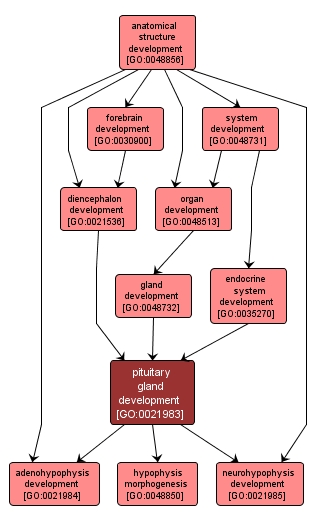GO TERM SUMMARY
|
| Name: |
pituitary gland development |
| Acc: |
GO:0021983 |
| Aspect: |
Biological Process |
| Desc: |
The progression of the pituitary gland over time from its initial formation until its mature state. The pituitary gland is an endocrine gland that secretes hormones that regulate many other glands. |
| Synonyms:
|
|

|
INTERACTIVE GO GRAPH
|














